Skara Brae - The Storm That Lifted the Cloak From Europe’s Best Preserved Stone Age Village
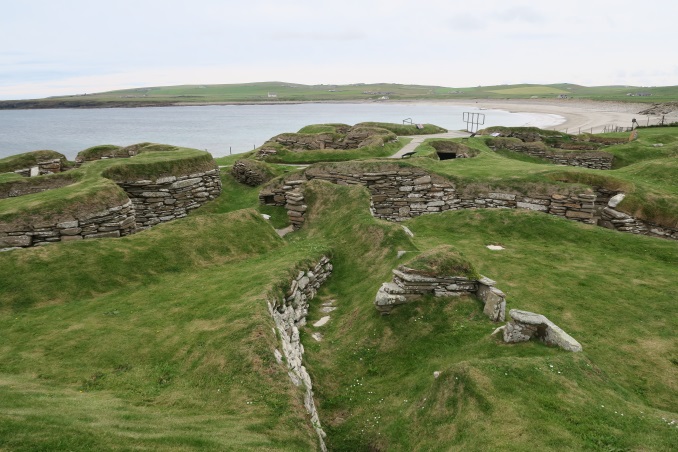
Orkney (Scottish Gaelic: Arcaibh), is an archipelago made up of 70 islands, 20 of which are inhabited, that lie 10 miles (16 km) from the coast of Caithness (Scottish Gaelic: Gallaibh) in northern Scotland.
During the winter of 1850 a severe storm lashed the islands including the largest island in the group called Mainland. Beneath the sand dunes on the Bay of Skaill the combination of wind and some very high tides stripped the grass from a large mound, then known as "Skerrabra" and revealed a long hidden secret. One of the most remarkable archaeological sites in the world was discovered that year, when after many centuries nature lifted the cloak that had covered the 5000 year old preserved village at Skara Brae. Local laird, William Watt of Skaill, began an excavation of the site in 1868. Four ancient houses were unearthed before work at Skerrabra was abandoned. The settlement remained undisturbed until 1925 when a further storm was seen to threaten the site and a sea-wall was built to preserve the remains. Construction of this led to the discovery of more ancient buildings.
Between 1928 and 1930 further excavations uncovered the dwellings visible today. Subsequent radiocarbon dating point to the village having been occupied for about 600 years from 3100 BC to 2500 BC. This was a time in the Neolithic or New Stone Age period before the discovery of metal. Eight dwellings can be seen, linked together by a series of low, covered passages. The buildings, along with their contents, are well-preserved, with the walls of the structures still standing, and alleyways roofed by their original stone slabs. Tools, furniture and artwork found on the site give clues of how the ancient inhabitants lived their lives. Due to coastal erosion, Skara Brae now stands right by the shore of the Bay o' Skaill. However, during its lifetime the village would have been some distance from the sea. Over time the encroaching sand dunes led to the village’s gradual abandonment.
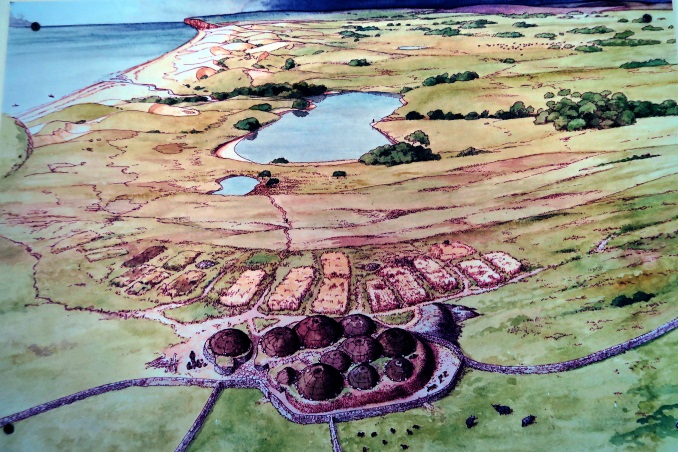
Skara Brae is a remarkable place to visit and allows you to step back 5,000 years in time, before the building of Stonehenge or the pyramids of Egypt. This once thriving village is now the best-preserved Neolithic settlement in Western Europe. This was a farming community that raised cattle and sheep as well as growing barley. Included in their diet was venison, meat and eggs from seabirds, oysters, crabs, cockles, mussels, and fish from the sea. Alongside the complex of houses, a workshop stands where stone and bone tools were made. They created works of art like bone necklaces and mysterious stone balls carved from hard volcanic rock. It was a time when the prehistoric people of Orkney built a series of monuments in stone. Including Maeshowe, a chambered tomb that allows the light of the setting sun at the winter solstice to focus on the narrow passageway, illuminating the chamber inside. The Stones of Stenness circle and henge with surviving stones standing up to nearly 20 feet (6m) tall. The Ring of Brodgar which is a stone circle measuring over 426 feet (130m) across. Surrounded by a rock cut ditch, it is set in a spectacular natural amphitheatre of lochs and hills. In 1999 Skara Brae along with these other monuments were designated as a World Heritage site.
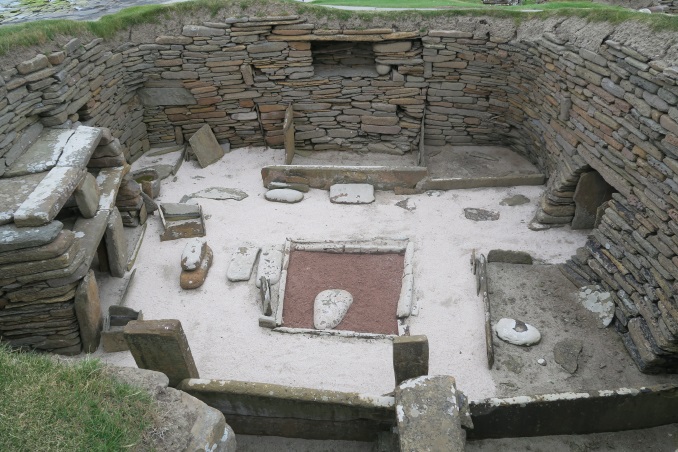
There are a number of sites dating to to the neolithic period on other islands of Orkney. They include Knap of Howar on the Orkney island of Papa Westray. This is a well-preserved Neolithic farmstead and possibly the oldest preserved stone house in northern Europe. Radiocarbon dating shows that it was occupied from 3700 BC to 2800 BC, which makes it earlier than the settlement at Skara Brae. A similar but smaller site to Skara Brae also exists on the island of Rousay. Meanwhile other sites are under investigation such as the Links of Noltland near Grobust Bay on the north coast of Westray which contains the remains of a Neolithic village as well as a Bronze Age dwellings.
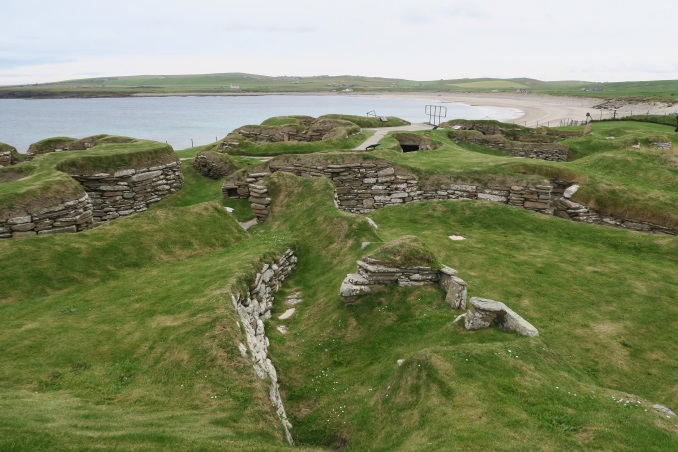
When visiting Skara Brae it is also worth visiting the adjacent Skaill House and entry is included in a joint ticket with Skara Brae. This 17th century building was the home to William Graham Watt, the Laird of Breckness who unearthed Skara Brae in 1850. The lands around Skaill House have been in use since neolithic times with various finds dating from the Bronze and Iron Ages. Orkney was populated by the Pictish people. It was then annexed by Norway in 875 and settled by the Norse. Orkney came under the Scottish Crown in 1472. The Norse heritage of Orkney can be found throughout the islands, including in placenames and archeological evidence. In 1858 a boy and his dog found the largest hoard of Viking silver found in Scotland at Skaill. The Skaill Hoard as it came to be known comprised over 100 silver objects. Some of which consisted of 'hack silver, ring money and ingots used for trading and payments. Ornamental items included arm and neck rings and cloak pins. These 'thistle brooches' included one measuring 16 inches (400mm) thought to have been crafted in the Isle of Man, where the same designs have been found on stone carvings.
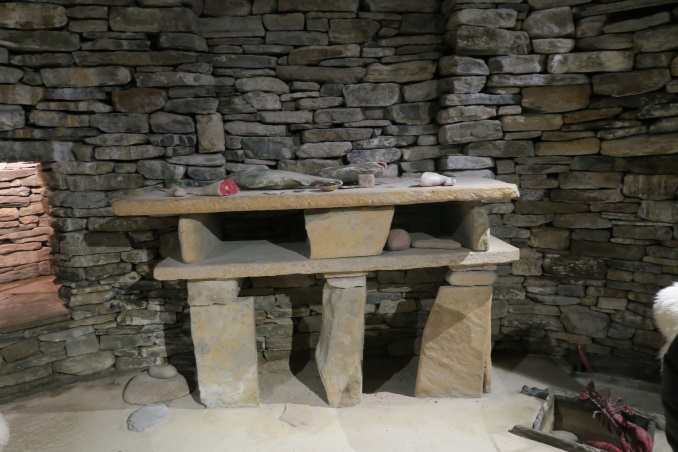
The name Skaill derives from the Old Norse word for "hall". The southern wing of Skaill House stands on a pre- Norse burial ground. During preparation of Skaill House for its opening to the public, fifteen skeletons were discovered south of the south wing and under the gravel in front of the east porch. Radiocarbon dating revealed these skeletons to be Norse. Before this, skeletons were found under the flagstone in the main hall when it was lifted to be replaced by oak flooring in the twentieth century. They were put back carefully, where they remain. The site was part of a Norse Graveyard and continues to be respected as such.
Clearly the past inhabitants of the site long pre-date the building of the present house in 1620. They along with past residents of the property have left their mark. There is an air of magic, mystery and unseen presence that suggests that perhaps those who have lived here continue to watch over their once earthly domain. Skaill House has many tales of unexplained phenomena with visitors, members of staff and the current Laird, having experiences that remain unexplained. There seems to be one common thread running these encounters though, which is a feeling of friendliness. So when you visit you can expect a warm welcome from those living in the present and perhaps those whose presence is a bit more difficult to determine.
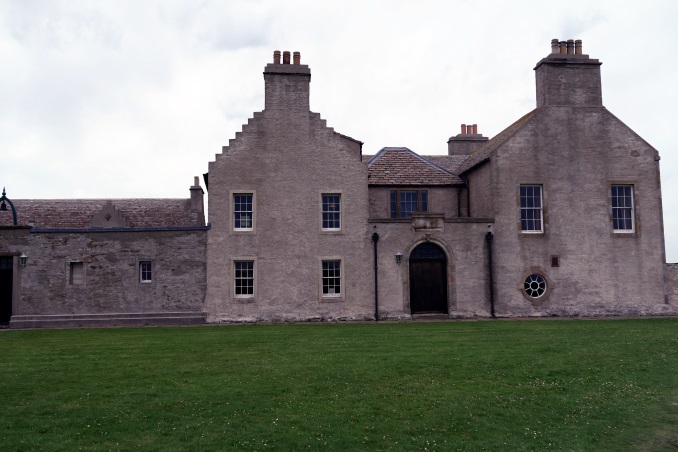
- Scottish
- English
- Log in to post comments





